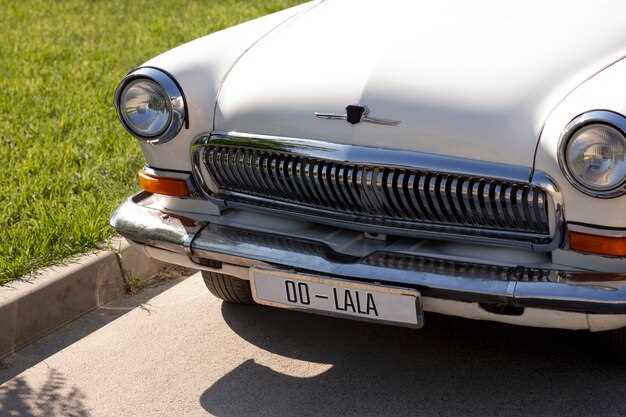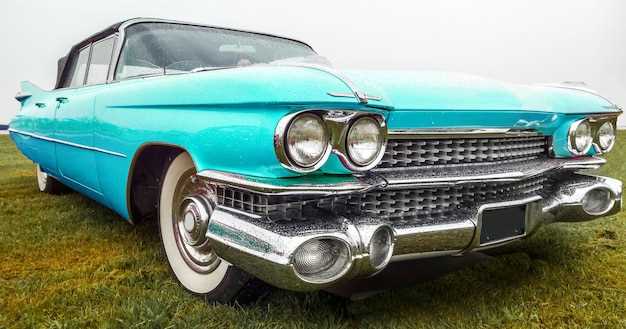

The classic Ford Mustang is not just a car; it represents an iconic piece of American automotive history. Restoring its original badges and trim can significantly enhance the vehicle’s aesthetic and value. This guide will provide you with essential insights and techniques for effectively restoring these elements to their former glory.
One of the most critical aspects of restoration is polishing. Over time, badges and trim can become tarnished, faded, or scratched. Proper polishing techniques can revive the shine and luster of these components. This article will outline the best practices for polishing various materials, including chrome and stainless steel, ensuring that your Mustang’s badges are reflective of its original craftsmanship.
In addition to polishing, understanding the correct methods for cleaning and reattaching badges and trim is crucial. Using the right adhesives and tools can prevent damage during the restoration process. By following the steps detailed in this guide, you can maintain the integrity of your Mustang’s original features while achieving a showroom-quality finish.
Assessing Condition of Badges and Trim for Restoration

To successfully restore Mustang badges and trim, a thorough assessment of their condition is essential. This process involves examining for surface damage, scale corrosion, and overall wear. Here are key factors to consider:
- Visual Inspection: Begin by closely inspecting each component. Look for signs of fading, scratches, or dents. Take note of the areas that require the most attention.
- Material Check: Determine the material of the badge or trim. Common materials include chrome, plastic, and aluminum. Each material has different restoration techniques.
- Corrosion Assessment: Look for any signs of rust or corrosion, particularly on metal parts. Use a magnifying glass to identify small areas that might need treatment.
- Attachment Points: Evaluate how badges and trim are attached to the vehicle. Check for broken clips, missing screws, or deteriorated adhesive that could affect reinstallation.
Once you have assessed the overall condition, you can decide on the appropriate restoration methods. Polishing is often a critical step in the restoration process for metallic surfaces. Here are some recommendations:
- Choose the Right Polish: Select a polish specifically designed for the material you are working with. For chrome, a metal polish will produce the best results.
- Prepare the Surface: Clean the badge or trim thoroughly to remove any dirt or debris before polishing.
- Apply Polish Correctly: Use a soft cloth or polishing pad to apply the polish evenly. Follow the manufacturer’s instructions regarding application techniques and dwell time.
- Buff to Shine: After applying the polish, buff the surface until it reaches the desired shine. This enhances the overall appearance and helps protect against future corrosion.
By carefully assessing the condition of your Mustang badges and trim and employing effective polishing techniques, you can ensure that these elements are restored to their original glory.
Step-by-Step Process for Polishing Mustang Emblems

Polishing Mustang emblems is essential for restoring their original shine and ensuring they complement your classic car’s aesthetics. Follow this step-by-step process to achieve the best results.
Step 1: Gather Your Materials
Before starting, collect the necessary supplies, including a soft cloth, a variety of polishing compounds (such as metal polish or plastic polish), a toothbrush, warm soapy water, and mask tape. Ensure your workspace is clean and well-lit.
Step 2: Remove the Emblems
Carefully detach the emblems from the vehicle using a flat-head screwdriver or plastic trim tools to avoid damaging the surrounding paint. If the emblem is glued in place, use a heat gun or hairdryer to soften the adhesive for easier removal.
Step 3: Clean the Emblems
Once removed, thoroughly clean the emblems with warm soapy water and a soft cloth. For intricate areas, use a toothbrush to remove dirt and grime. Rinse the emblems with fresh water and dry them completely before proceeding.
Step 4: Apply Polishing Compound
Choose an appropriate polishing compound based on the materials of your emblems. Apply a small amount of polish to a clean cloth and gently buff the surface in a circular motion. Focus on one section at a time to ensure even coverage.
Step 5: Inspect and Repeat
After the initial polishing, inspect the emblems for any remaining dull spots or scratches. If necessary, apply more compound and continue buffing until the desired shine is achieved.
Step 6: Final Polish
Once the emblems are shiny, use a clean cloth to wipe away any excess polish. For an extra layer of protection and shine, consider applying a wax or sealant designed for automotive surfaces.
Step 7: Reattach the Emblems
Using fresh adhesive or double-sided tape, carefully reattach the emblems to your Mustang. Ensure they are aligned correctly and press firmly to secure them in place.
By following this step-by-step process, you can restore the beauty of your Mustang emblems, enhancing your vehicle’s overall appearance and value.
Choosing the Right Materials for Badge and Trim Restoration
When restoring Mustang emblems and trim, selecting the appropriate materials is crucial for achieving a high-quality finish that matches the original design. The materials used not only influence the appearance but also affect durability and longevity. A combination of metal, plastic, and paint is often required to replicate the authentic look of original badges and trim.
For metal emblems, options include stainless steel, aluminum, or zamak (a zinc-aluminum alloy). Stainless steel is preferred for its corrosion resistance and strength, ensuring that restored emblems can withstand various weather conditions without tarnishing. Aluminum is lightweight and can be polished to a high shine but may require a clear coat to prevent oxidation. Zamak offers a good balance between weight and strength, making it a popular choice for reproducing intricate details in emblems.
When dealing with plastic trim pieces, it’s important to choose high-quality automotive-grade plastic, which can withstand UV exposure and temperature fluctuations. ABS plastic is commonly used for its toughness and ability to hold paint well. If the trim needs to be molded or shaped, look for thermoplastics that can be easily manipulated and painted to match the original colors.
Paint selection also plays a significant role in the restoration process. Using a high-quality automotive paint that is resistant to fading and chipping will ensure that the restored emblems and trim maintain their appearance over time. A base coat followed by a clear coat can enhance durability and shine. For emblems that were originally chrome-plated, consider using chrome paint or a plating service to replicate that reflective quality.
Lastly, don’t overlook the importance of adhesives and fasteners. Choose automotive-grade adhesives that can withstand heat and moisture for securing emblems and trim. If any clips or fasteners are needed for proper installation, ensure they match the original specifications for a seamless restoration.





